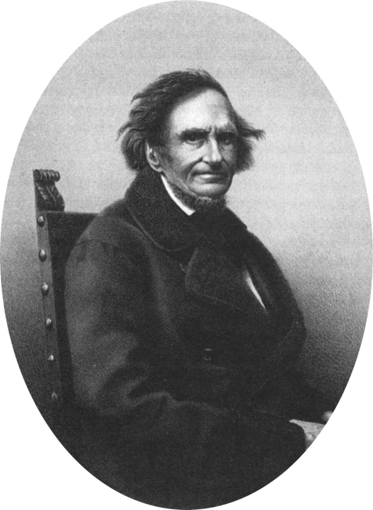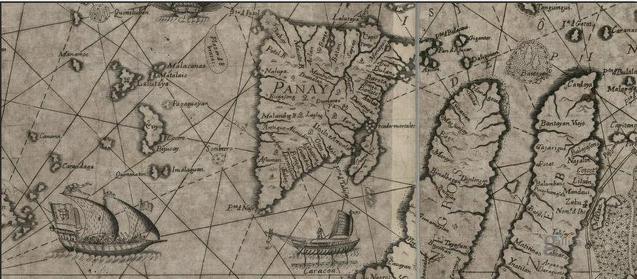|
Calamaria Gervaisii
''Calamaria gervaisii'', commonly known as Gervais' worm snake, is a species of relatively small-sized burrowing or fossorial snake in the family Colubridae. This Snake feed on Earthworms and can grow maximum of 1FT or 30CM in length Etymology The specific name, ''gervaisii'', is in honor of French zoologist Paul Gervais. Geographic range ''Calamaria gervaisii'' is endemic to the Philippine Islands. Its range includes the islands of Basilan, Catanduanes, Cebu, Lubang, Luzon, Mindanao, Mindoro, Negros, Panay, Polillo, and Tablas. Habitat ''C. gervaisii'' is found from near sea level up to altitudes of . It lives in forests and plantations, burrowing in the leaf litter and hiding under stones and fallen logs, or between the buttresses of trees. Status The IUCN has listed ''Calamaria gervaisii'' as being of "least concern A least-concern species is a species that has been categorized by the International Union for Conservation of Nature (IUCN) as evaluated as not be ... [...More Info...] [...Related Items...] OR: [Wikipedia] [Google] [Baidu] |
André Marie Constant Duméril
André Marie Constant Duméril (1 January 1774 – 14 August 1860) was a French zoologist. He was professor of anatomy at the Muséum national d'histoire naturelle from 1801 to 1812, when he became professor of herpetology and ichthyology. His son Auguste Duméril was also a zoologist. Life André Marie Constant Duméril was born on 1 January 1774 in Amiens and died on 14 August 1860 in Paris. He became a doctor at a young age, obtaining, at 19 years, the ''prévot'' of anatomy at the medical school of Rouen. In 1800, he left for Paris and collaborated in the drafting of the comparative anatomy lessons of Georges Cuvier. He replaced Cuvier at the Central School of the Panthéon and had, as his colleague, Alexandre Brongniart. In 1801, he gave courses to the medical school of Paris. Under the ''Restauration'', he was elected a member of the Académie des Sciences (French Academy of Sciences) and after 1803 succeeded Lacépède, who was occupied by his political o ... [...More Info...] [...Related Items...] OR: [Wikipedia] [Google] [Baidu] |
Luzon
Luzon (; ) is the largest and most populous island in the Philippines. Located in the northern portion of the Philippines archipelago, it is the economic and political center of the nation, being home to the country's capital city, Manila, as well as Quezon City, the country's most populous city. With a population of 64 million , it contains 52.5% of the country's total population and is the fourth most populous island in the world. It is the 15th largest island in the world by land area. ''Luzon'' may also refer to one of the three primary island groups in the country. In this usage, it includes the Luzon mainland, the Batanes and Babuyan groups of islands to the north, Polillo Islands to the east, and the outlying islands of Catanduanes, Marinduque and Mindoro, among others, to the south. The islands of Masbate, Palawan and Romblon are also included, although these three are sometimes grouped with another of the island groups, the Visayas. Etymology The n ... [...More Info...] [...Related Items...] OR: [Wikipedia] [Google] [Baidu] |
Giorgio Jan
Giorgio Jan (21 December 1791 in Vienna – 8 May 1866, Milan) was an Italian taxonomist, zoologist, botanist, herpetologist, and writer. He is also known as Georg Jan or Georges Jan. Biography After having been an assistant at the University of Vienna, Jan obtained the post of professor of botany at the university of Parma as well as becoming Director of the botanical garden. At that time, the duchy of Parma was no longer under Austrian jurisdiction following the Congress of Vienna after the defeat of Napoleon at Waterloo. Giuseppe de Cristoforis died in 1837 bequeathing his collections to the town of Milan on condition that the municipality created a natural history museum whose direction had to be entrusted to Giorgio Jan, who offered his own collections. The ''Museo Civico di Storia Naturale di Milano'' was created the following year and is the oldest natural history museum of Italy. Jan immediately engaged Ferdinando Sordelli (1837–1916), artist and naturalist, who the ... [...More Info...] [...Related Items...] OR: [Wikipedia] [Google] [Baidu] |
French Language
French ( or ) is a Romance language of the Indo-European family. It descended from the Vulgar Latin of the Roman Empire, as did all Romance languages. French evolved from Gallo-Romance, the Latin spoken in Gaul, and more specifically in Northern Gaul. Its closest relatives are the other langues d'oïl—languages historically spoken in northern France and in southern Belgium, which French (Francien) largely supplanted. French was also influenced by native Celtic languages of Northern Roman Gaul like Gallia Belgica and by the ( Germanic) Frankish language of the post-Roman Frankish invaders. Today, owing to France's past overseas expansion, there are numerous French-based creole languages, most notably Haitian Creole. A French-speaking person or nation may be referred to as Francophone in both English and French. French is an official language in 29 countries across multiple continents, most of which are members of the '' Organisation internationale de la Francopho ... [...More Info...] [...Related Items...] OR: [Wikipedia] [Google] [Baidu] |
George Albert Boulenger
George Albert Boulenger (19 October 1858 – 23 November 1937) was a Belgian-British zoologist who described and gave scientific names to over 2,000 new animal species, chiefly fish, reptiles, and amphibians. Boulenger was also an active botanist during the last 30 years of his life, especially in the study of roses. Life Boulenger was born in Brussels, Belgium, the only son of Gustave Boulenger, a Belgian public notary, and Juliette Piérart, from Valenciennes. He graduated in 1876 from the Free University of Brussels with a degree in natural sciences, and worked for a while at the Royal Belgian Institute of Natural Sciences, Brussels, as an assistant naturalist studying amphibians, reptiles, and fishes. He also made frequent visits during this time to the '' Muséum national d'Histoire naturelle'' in Paris and the British Museum in London. In 1880, he was invited to work at the Natural History Museum, then a department of the British Museum, by Dr. Albert C. L. G. Gün ... [...More Info...] [...Related Items...] OR: [Wikipedia] [Google] [Baidu] |
Least Concern
A least-concern species is a species that has been categorized by the International Union for Conservation of Nature (IUCN) as evaluated as not being a focus of species conservation because the specific species is still plentiful in the wild. They do not qualify as threatened, near threatened, or (before 2001) conservation dependent. Species cannot be assigned the "Least Concern" category unless they have had their population status evaluated. That is, adequate information is needed to make a direct, or indirect, assessment of its risk of extinction based on its distribution or population status. Evaluation Since 2001 the category has had the abbreviation "LC", following the IUCN 2001 Categories & Criteria (version 3.1). Before 2001 "least concern" was a subcategory of the "Lower Risk" category and assigned the code "LR/lc" or lc. Around 20% of least concern taxa (3261 of 15636) in the IUCN database still use the code "LR/lc", which indicates they have not been re-evalua ... [...More Info...] [...Related Items...] OR: [Wikipedia] [Google] [Baidu] |
IUCN
The International Union for Conservation of Nature (IUCN; officially International Union for Conservation of Nature and Natural Resources) is an international organization working in the field of nature conservation and sustainable use of natural resources. It is involved in data gathering and analysis, research, field projects, advocacy, and education. IUCN's mission is to "influence, encourage and assist societies throughout the world to conserve nature and to ensure that any use of natural resources is equitable and ecologically sustainable". Over the past decades, IUCN has widened its focus beyond conservation ecology and now incorporates issues related to sustainable development in its projects. IUCN does not itself aim to mobilize the public in support of nature conservation. It tries to influence the actions of governments, business and other stakeholders by providing information and advice and through building partnerships. The organization is best known to the wider ... [...More Info...] [...Related Items...] OR: [Wikipedia] [Google] [Baidu] |
Tablas Island
Tablas is the largest of the islands that comprise the province of Romblon in the Philippines. The name of the island was of Spanish origin. Before the colonization of the Philippines, Tablas was known as the Island of ''Osigan''. At the time of contact with Westerners, ''Osigan'' had a population of two hundred and fifty people living in small villages. Wax was produced in this island. Odiongan, on the west central coast of the island, is a major port and the largest municipality of Romblon in terms of population. Tablas is administratively subdivided into the municipalities of Alcantara, Calatrava, Ferrol, Looc, Odiongan, San Agustin, San Andres, Santa Fe, and Santa Maria. Geography The island lies about east from the southern part of Mindoro Island. The northern tip of Tablas is about from Romblon Island. ''Mount Payaopao'' (also known as ''Tablas Summit'' on old maps) at the northeastern extremity of the island, is the highest peak on the island at high and th ... [...More Info...] [...Related Items...] OR: [Wikipedia] [Google] [Baidu] |
Polillo Island
Polillo () is an island in the northeastern region of the Philippine archipelago. It is the largest island and the namesake of the Polillo Islands. It is separated from Luzon Island by the Polillo Strait and forms the northern side of Lamon Bay. The island itself is subdivided across three municipalities. The municipality of Polillo covers the southern portion of the island, while the northeastern part is administered by the municipality of Burdeos. The northwest is within the jurisdiction of the municipality of Panukulan. The island is also home to the Butaan lizard, a vulnerable relative of the Komodo dragon The Komodo dragon (''Varanus komodoensis''), also known as the Komodo monitor, is a member of the monitor lizard family Varanidae that is endemic to the Indonesian islands of Komodo, Rinca, Flores, and Gili Motang. It is the largest ext .... As of the 2010 Philippine Census, the island is home to 64,802 individuals. In the mid-16th century, Spaniards ... [...More Info...] [...Related Items...] OR: [Wikipedia] [Google] [Baidu] |
Panay
Panay is the sixth-largest and fourth-most populous island in the Philippines, with a total land area of and has a total population of 4,542,926 as of 2020 census. Panay comprises 4.4 percent of the entire population of the country. The City of Iloilo is its largest settlement with a total population of 457,626 inhabitants as of 2020 census. Panay is a triangular island, located in the western part of the Visayas. It is about across. It is divided into four provinces: Aklan, Antique, Capiz and Iloilo, all in the Western Visayas Region. Just closely off the mid-southeastern coast lies the island-province of Guimaras. It is located southeast of the island of Mindoro and northwest of Negros across the Guimaras Strait. To the north and northeast is the Sibuyan Sea, Jintotolo Channel and the island-provinces of Romblon and Masbate; to the west and southwest is the Sulu Sea and the Palawan archipelago and to the south is Panay Gulf. Panay is the only main island in the V ... [...More Info...] [...Related Items...] OR: [Wikipedia] [Google] [Baidu] |





